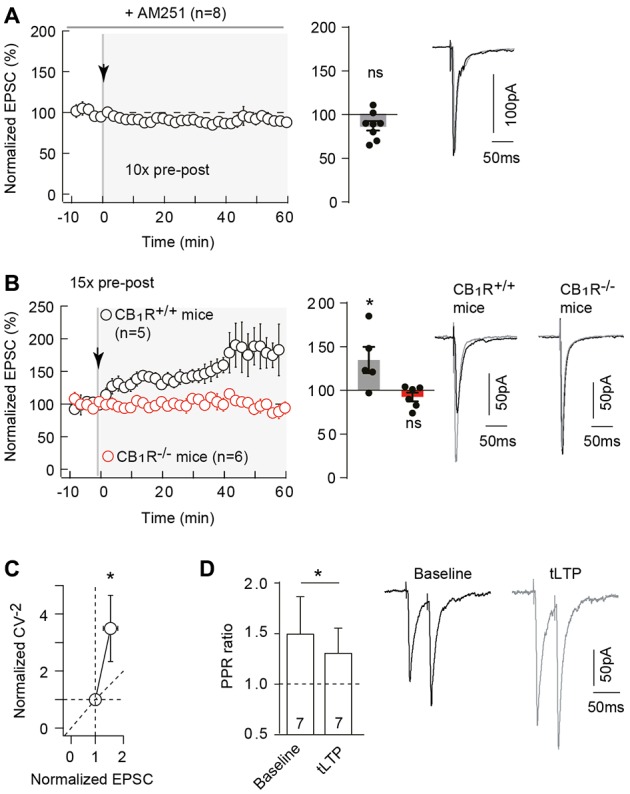Figure 4.

Neocortical 10 pairings-tLTP is type-1 cannabinoid receptor (CB1R)-mediated. (A) Pharmacological inhibition of CB1R prevented 10 pairings-tLTP. Summary of experiments showing that tLTP expression was prevented by AM251 (n = 8 cells from 4 rats; ΔtSTDP = +13 ± 1 ms). (B) tLTP was absent in CB1R−/– mice. Summary of experiments showing that 15 pre-post pairings induced tLTP in CB1R+/+ mice (n = 5 cells from 3 mice; ΔtSTDP = +10 ± 1 ms) whereas no plasticity was observed in CB1R−/– littermate mice (n = 6 cells from 5 mice; ΔtSTDP = +10 ± 1 ms). (C) The mean variance analysis, to determine the plasticity locus, consists in plotting the normalized CV−2 (CV−2 after plasticity induction /CV−2 during baseline) with the normalized EPSC amplitude (EPSC amplitude after plasticity induction /EPSC amplitude during baseline; see “Materials and Methods” section). Normalized CV−2 ≥ normalized EPSCs amplitude (n = 17) indicates a presynaptic locus of the endocannabinoid-mediated spike-timing dependent LTP (eCB-tLTP). (D) Representative traces and summary bar graphs (n = 7 pyramidal cells) of paired-pulse stimulation with 50 ms interstimulus interval illustrate a decrease of facilitation after STDP. This suggests a presynaptic locus of the eCB-tLTP. Representative traces are the average of 15 EPSCs during baseline (black traces) and 50 min after STDP protocol (gray traces). Error bars represent SD. *p < 0.05. ns, not significant.
